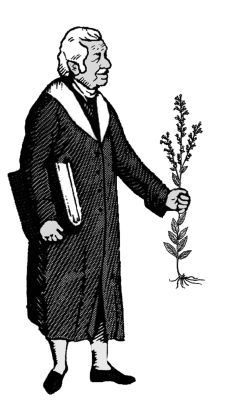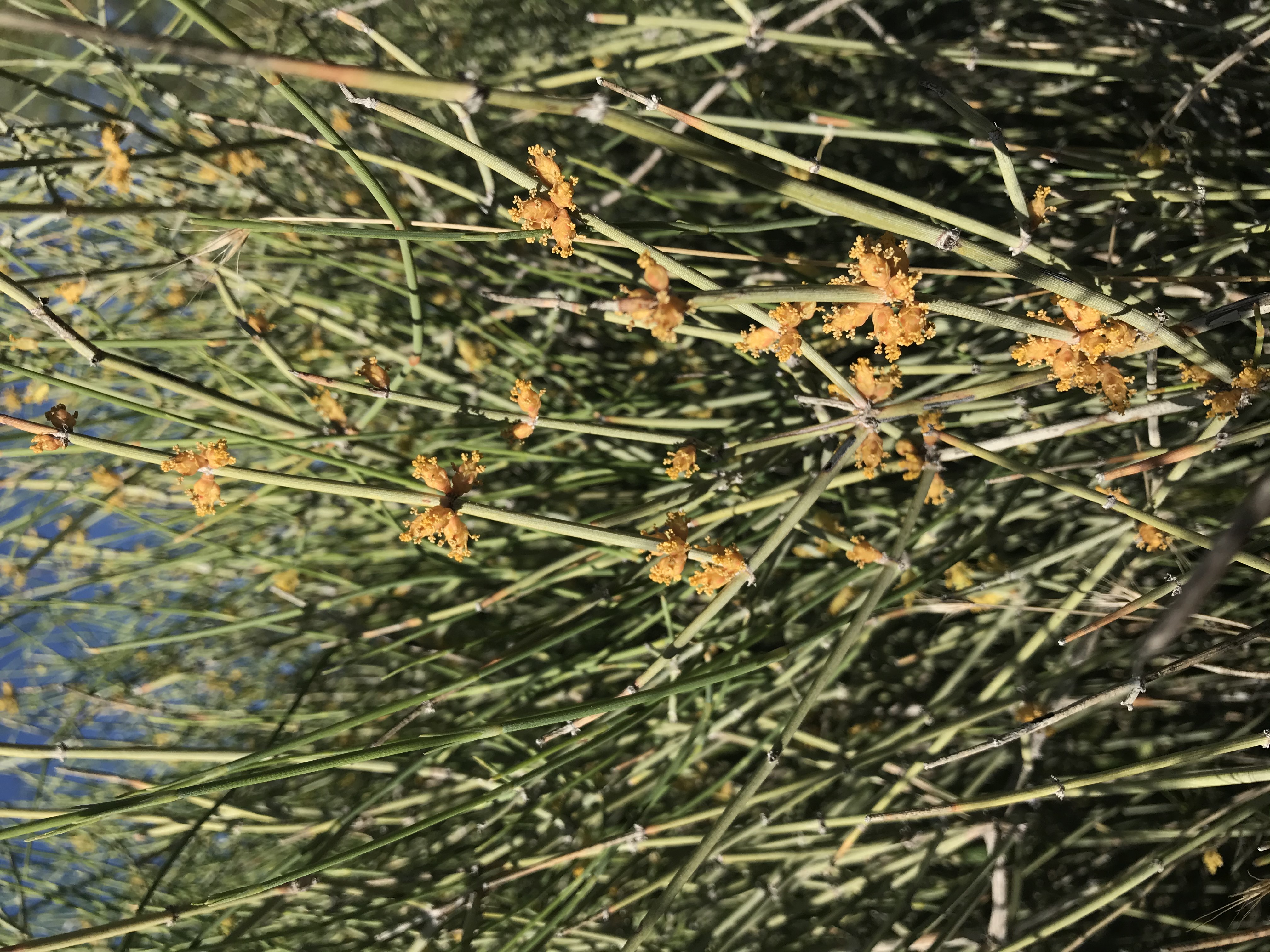Ephedra Viridis
Published: Wed, 08/12/20


Sponsored by The School of Natural Healing & Christopher Publications
August 12, 2020
Ephedra Viridis Shelly Sawyer Jenson, M.H.
When I first met Ephedra viridis, I was certain the plant was in a dormant stage, or possibly dead. The dry spaghetti stalks which pointed skyward from the small bush held not a single stem, leaf, flower nor berry. Just dry sticks. I was hiking in central Utah with Bob (who knows the land well); he set me straight regarding those spaghetti looking sticks.

Ephedra (commonly known as Brigham tea) is a perennial evergreen ranging from 1-4 feet tall, and is nearly leafless with slender, cylindrical, yellow-green branches. In August, the miniscule flowers – a magnifying glass comes in handy in order to see them – bear fleshy, red cones.
I was so enchanted by this strange plant that I researched and found it was carefully bundled within a 60,000 year old Neanderthal grave. I also found Ephedra has been revered in Chinese medicine for over 5,000 years and is known as the most effective phlegm mover, as well as a remover of stagnation. A few uses in Chinese medicine include: phlegm, edema, wheezing, cough, asthma. Ephedra is often combined with Zingiber (Ginger root) and Glycyrrhiza (Licorice root).
The Native American tribes in the southwest region of the country use the local Ephedra viridis to: purify blood, curb appetite, cleanse kidneys, serve as a laxative, aid in yellow jaundice, gonorrhea, and topically for snake bites and venereal diseases.
Before I harvested Ephedra, I studied different methods and found the Popotillo tribe only harvest when the inside pith is reddish-brown. I followed their advice and found this is indeed more potent than when the inner part is yellow/ivory.
When prepared as tea, old time herbalists and Mormon pioneers felt Ephedra should be infused repeatedly as it takes several days of simmering to sufficiently extract all the bioavailable copper and minerals.
Ephedra contains large amounts of ephedrine, as well as tannins, flavonoids, glycosides, inulin, starch, pectin, cellulose, saccharides such as glucose, oxalic acid, citric acid, malic acid, fumaric acid and other organic acids.
You may notice that many chemical constituents in Ephedra are acids. It is well known that acids break apart things which are stuck in the body, and that pectin binds to what needs to be removed, and that ephedrine moves things. This synergy of these constituents may be the reason for such longevity and reverence in Chinese and Native medicine.
Also, inulin is known to stabilize blood sugar while slowing the release of saccharides, perhaps this helps with steady energy, as opposed to a rapid spike.
I am not a doctor but feel Ephedra should be used thoughtfully, on a case by case basis, by those with the following: heart disease, high blood pressure, strokes, seizure disorders, anxiety disorders, during pregnancy, diabetes, thyroid disorders. Ephedra is not an adaptogen herb so I suggest use for only short periods of time.
Shelly Sawyer Jenson holds a BS in Mathematics and a Masters of Herbology. Shelly's greatest joys are hiking, dancing, singing, learning, writing, laughing with her two fabulous children, and discovering the limitless dimensions of the human heart.
Printable Version: http://herballegacy.com
If you missed an article be sure to visit http://www.herballegacy.com and click on Articles. Also, take advantage of David Christopher's Radio Show (see Resource Links below for more information).
A Healthier You Radio show is back!
Listen live every Monday morning at 11:30 Mountain Time.
Click here for the link to listen to our live show
David is on Youtube!
David released a great video about COVID-19 and how our immune systems work. Check it out here!
Watermelon Berry Cooler

4 C. watermelon cut up
1 C. raspberries (fresh or frozen)
1 lime juiced
honey or agave if desired
1-2 C. ice as desired
Place all ingredients in a blender. Blend until smooth. I use this recipe especially when a watermelon is not as crunchy as everyone would like or we can't eat it fast enough. It has the yummiest flavor and can easily be turned into frozen Popsicle treats as well. Watermelon seeds are great support for the kidneys as well as supplying electrolytes for the body. A great source of antioxidant rich vitamins, minerals, oxygen, and water to supply the body. Keep nourished and hydrated in the summer heat!
Recipe by Kelly Pomeroy

4 C. watermelon cut up
1 C. raspberries (fresh or frozen)
1 lime juiced
honey or agave if desired
1-2 C. ice as desired
Place all ingredients in a blender. Blend until smooth. I use this recipe especially when a watermelon is not as crunchy as everyone would like or we can't eat it fast enough. It has the yummiest flavor and can easily be turned into frozen Popsicle treats as well. Watermelon seeds are great support for the kidneys as well as supplying electrolytes for the body. A great source of antioxidant rich vitamins, minerals, oxygen, and water to supply the body. Keep nourished and hydrated in the summer heat!
Recipe by Kelly Pomeroy
Printable Version: http://herballegacy.com
Herbal Resource Links
- Herbal Legacy - http://www.herballegacy.com - Our free information website
- The School of Natural Healing - http://www.snh.cc - Quality Education since 1953
- Christopher Publications - http://www.christopherpublications.com - Dr. Christopher's books and more
- A Healthier You Radio Show - http://www.ahealthieryouradio.com - Free weekly radio show
This newsletter is sponsored by:
The School of Natural Healing: http://www.snh.cc
Christopher Publications: http://www.christopherpublications.com
The School of Natural Healing: http://www.snh.cc
Christopher Publications: http://www.christopherpublications.com
NOTICE: All information in this newsletter is given out as information only and is not intended to diagnose or prescribe. For our official Disclaimer, Biological Individuality, Important Notice & Terms of Use please see: http://www.herballegacy.com/Disclaimer.html
This newsletter is sent by permission only - you can unsubscribe quickly and easily by clicking the link below.
.

